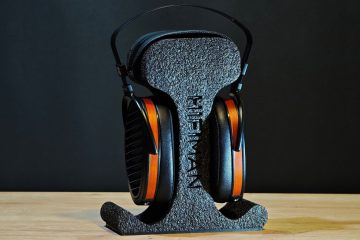Introduction
Happy New Year! On the last day of 2024, I am here with the Fiio FX15 review. Fx15 is the company’s new and only tribrid model. Fiio is a company whose products I have been following for a long time and I find their desktop devices quite successful. Let’s see if they have achieved the same success in the iem department. I listened to the FX15 for about 120-130 hours (excluding burn-in). I purchased the product myself to write an independent review.

Design & Build
Package
Fiio Fx15 welcomes you with a very full and generous box contents. Everything that comes with it is very high quality. Here is the list of what comes out of the box:
- HB5 carrying case
- Cable with 4.4 mm and 3.5 mm modular plugs
- 3 x “vocal” silicone tips (S/M/L)
- 3 x “bass” silicone tips (S/M/L)
- 3 x “balanced” silicone tips (S/M/L)
- 2 x dual flange silicone tips (M)
- 2 x foam tips (M)
- 3 x Spinfit silicone tips (S/M/L)
- 3 x HS18 silicone tips (S/M/L)
- Magnetic cable clip
- Cleaning brush cum tuning switch pin
- MMCX release tool

FiiO FX15’s Shells, Tips, Cable and Case
These shells produced by Fiio in collaboration with HeyGears look just amazing. The drivers inside are nice to look at, but aside from that, the fit and isolation are great.
Fiio FX15’s cable is as beautiful as the shells. The interchangeable jack mechanism is very good. But the notch on the metal part on the cable side is a bit small, so it’s easy to get it wrong. Other than that everything is great, no interference and no microphonics. It comes with two jacks, 3.5mm and 4.4mm. Here too, we see signs of the slow abandonment of 2.5mm.
The carrying case is both stylish and reassuring as it is a hard case. The tips come in a plastic box with the sound profile printed on the bottom of each one. I find this presentation premium, and there are a lot of tips.

Switch?
Putting a button that turns off the driver responsible for the upper treble on an iem whose best part is the upper treble. It’s the most pointless and ridiculous switch I’ve ever seen in my life. I’ve never once thought of using this switch. I think it’s just a way to put in popular elements. Dude, it’s a kitsch.

Synergy
FiiO FX15 With iBasso DC04Pro
Except for a little too much midbass hum, the Fiio FX15 and iBasso DC04pro are well matched. The warm, mid-shy sound of the FX15 combined with the dynamic, open and exciting sound of the DC04pro creates a pleasant V-shape. With this pairing, it is very enjoyable to listen to both rock-blues genres and pop-hiphop-edm genres. It would not be my first choice for metal and classical.

FiiO FX15 With Hiby FC6
Fiio FX15 sounds warm and dark with Hiby FC6. It’s actually quite calm, but when you bring the mid region to the desired level, the lower frequencies are too much. This darkens the overall presentation. It’s technically acceptable and a bit more reasonable in the metal genres than the previous pairing. But overall I prefer the previous pairing, even though the FC6 is a better device than the DC04pro. You can hear this in the deeper and more textured playing of the FC6 with the FX15. This shows once again the importance of synergy. Those who like dark and warm sound may prefer this pairing.

FiiO FX15 With Astell&Kern SE300
My lovely R2R dap the Se300, is almost impossible to find a bad match for. The balanced, resolving and detailed sound of the Astell&Kern SE300 pushes the FX15 to its limits. The FX15, with its recessive midrange, is not a bad instrument performance in this pairing, while at the same time sounding very balanced. I’m listening to a slightly warm U-shape and the highs are really great. Not much to say, the FX15 plays unsurprisingly well with the SE300 🙂

Sound
Let’s come to the most complicated and most enjoyable part of the review. Let me remind you before this part: EST drivers were always on, I mainly listened with the SE300 and used the different tips that came in the box. The best were the vocal tips, which I also used mainly.
Tonality
Warm, V-shape, mids back, air frequencies up front.
The Fiio FX15 is a mid-shy iem with the upper frequencies clearly in front and the lower frequencies slightly in front. It has a warm and balanced presentation of vocals. Air frequencies are quite strong. There is nothing tonally bad about it except that the instruments are in the background.
Technique
It’s not technically homogeneous. The upper treble is incredibly resolved and detailed, while the rest of the sound doesn’t have this level of technique. It’s not an extreme difference, but it’s still noticeable. Otherwise, the staging is good and the overall positioning is successful. Separation is quite good while layering is average. Overall resolution is average for this price band, while detail reproduction is great in the highs and average in the lows and mids.

Bass
They are punchy, large, they convey a sense of tension successfully. They spread out a bit too much and I think they’re not fast enough. Other than that, the separation and positioning of the bass is very well. The bass texture of the Fx15 is enough to save the day. It’s fine in electronic genres, it’s good on drums and bass guitars, but it doesn’t have enough texture on contrabass. It’s still pretty sweet in terms of timbre.
Mid
The mids of the Fiio FX15 are reserved, but with a small number of instruments they are successful in both texture and detail. A pair of guitars sound great when listening to Tamacun by Rodrigo y Gabriela. On the fast and intense Allegaeon – Concerto in Dm, the loss of texture is immediately noticeable. Speed and detail capture is not bad. It even has a very nice guitar timbre.
The driver used for the mids is Knowles ED-29689. This driver, which is actually quite capable, plays all of the mids and most of the treble frequencies on its own. It would have been much better if they had put two armatures and distributed this load. That way they wouldn’t have to cut the mids (a small suggestion for the FX17).
Treble
The lower treble lacks emotion, it’s not resolving and textured enough. Without a bright source for the lower treble this area is rather thin. The upper treble on the other hand is very fast, high resolution and detail reproduction is excellent. It has a great texture and an amount of extension that I find a bit too much. It goes without saying that the driver does the work here. They should have made a more balanced iem in the 1000usd band instead of sacrificing so much bass and mids to make an iem with EST driver. Of course this is just my personal opinion 🙂

Fiio FX15 vs Dita Project M
I listen to both with stock leads and cables, through the 4.4 output of the SE300, in low gain, oversampling and AB amp mode.
Both have a sound profile with the lows slightly forward and the highs more forward, while Project M is more balanced. Fiio FX15 sounds darker and warmer, while Project M is more open and linear.
Lower frequency resolutions are similar. Dita Project M and Fiio FX15 show similar texture and resolution in this area. The bass of the FX15 is more intense and prominent.
In the midrange, the Dita Project M is more balanced and plays more fresh. In the midrange, the Project M is more detailed and bodied, with more texture. The FX15 has better timbre. Project M has better separation in this area.
Project M has a wider stage while FX15 is deeper. Both have similar separation. FX15 has a more full-bodied presentation.
Project m has more texture in the lower treble area. The Fiio FX15 is clearly superior in the upper treble. The FX15 has more detailed, resolving and consistent upper treble. While both iems have air frequencies up front, the FX15’s air frequencies have better extension.

Last Words
Fiio makes great wireless amps and great desktop devices. However, I think they are struggling to maintain the success they had with the fh series when it comes to iem. Nevertheless, I appreciate their great design and efforts. I find the pricing of the FX15 a bit wrong. People who love air frequencies and have a relatively bright-midcentric source might consider buying this iem. Other than that, I find the IE600 much more successful.










